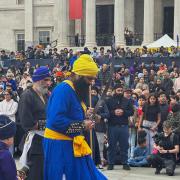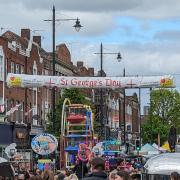
The red poppy is a well-recognised symbol across Britain and can be found in many different forms in local shops and schools.
Whilst the traditional red paper poppy may be what springs to mind when you think about remembrance Sunday, there are many different poppies, each of which has its meaning. One popular example is the white poppy which focuses on promoting peace.
The rainbow poppy, designed in memory of LGBTQ+ soldiers, has caused controversy this year. Some support the poppy as it acknowledges the crucial role that members of the LGBTQ+ society, like Alan Turing, had in the war. Others, however, say that the staple red poppy is a symbol of all soldiers of all sexualities and that a rainbow poppy is unnecessary. It isn’t known for definite whether it has been produced or sold.
The poppy symbol is no longer exclusive to badges. A local school in Hendon has a British Legion stall that sells an arrangement of poppy bearing products including slap-bracelets and reflective poppies designed to keep people safe at night.
You could see these products as a distraction from the core message of the poppy symbol. The addition of the poppy onto items like the slap-bracelet could also make students think less about the solemnity of Remembrance Day but rather the excitement of a new bracelet. On the other hand, these products could help connect children with Remembrance Day. They are accessible products that can open conversations about honouring soldiers.
Whilst some may see the development of the poppy symbol as a distraction from the idea of remembrance, you should see these poppies as an attempt to connect people of all beliefs, ages, and backgrounds to Remembrance Sunday.
Eve Nicholls



























